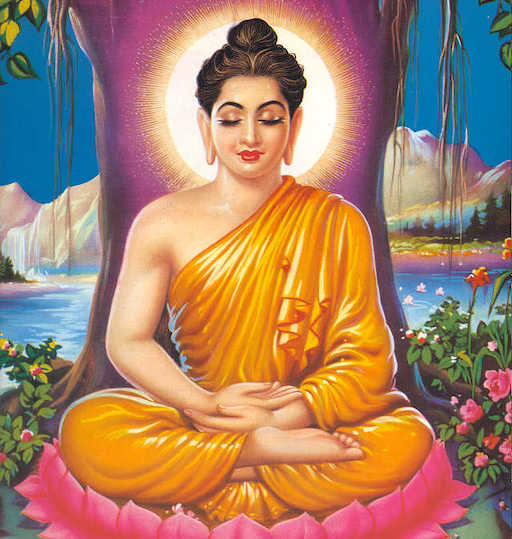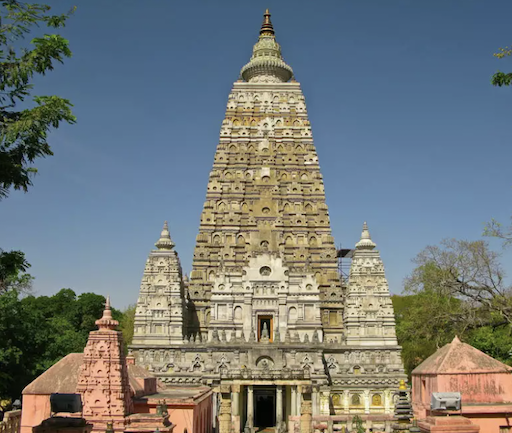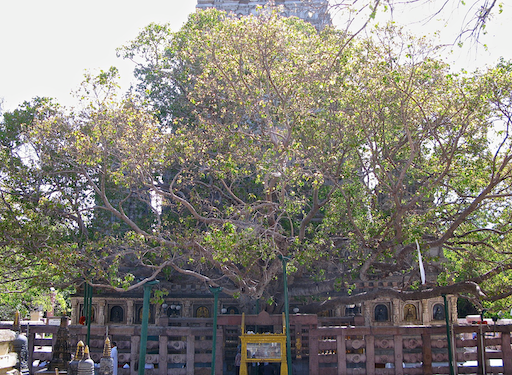This is the place where Gautam Buddha was enlightened. You can go close to the Bodhi tree where Buddha was enlightened. You can also sit and meditate. You can go into meditative states here effortlessly.
How to Get there
Bodh Gaya is well connected. The airport is just 14 kms away. Gaya train station is just 15 kms away.
Map: https://goo.gl/maps/TqRo1duJ1uVxDfM36
About Bodh Gaya
“Bodh Gaya is the place where Gautama Buddha attained unsurpassed, supreme Enlightenment. It is a place which should be visited or seen by a person of devotion and which would cause awareness and apprehension of the nature of impermanence”.
Siddhartha Gautama, the Buddha-to-be, had been dwelling on the banks of the Nairanjana River with five ascetic followers for six years practicing austerities. Realising that austerities could not lead to realisation he abandoned them. His five ascetic companions disgusted at his seeming failure, deserted him and left for Sarnath.
He then moved towards the village of Senani where he was offered rice milk by a Brahmin girl, Sujata. Accepting from a grass-cutter a gift of kusa grass for a mat, the Bodhisattva took a seat under a pipal tree facing east. Here he resolved not to rise again until enlightenment was attained.
“Here on this seat my body may shrivel up, my skin, my bones, my flesh may dissolve, but my body will not move from this seat until I have attained Enlightenment, so difficult to obtain in the course of many kalpas”.
As Gautama sat in deep meditation, Mara, Lord of Illusion, perceiving that his power was about to be broken, rushed to distract him from his purpose. The Bodhisattva touched the earth, calling it to bear witness the countless lifetimes of virtue that had led him to this place of enlightenment. When the earth shook, confirming the truth of Gautama’s words, Mara unleashed his army of demons. In the epic battle that ensued, Gautama’s wisdom broke through the illusions and the power of his compassion transformed the demons’ weapons into flowers and Mara and all his forces fled in disarray.
About Mahabodhi Temple
The historical place at which the Enlightenment took place became a place of pilgrimage. Though it is not mentioned in the scriptures, the Buddha must have visited Bodh Gaya again in the course of his teaching career. About 250 years after the Enlightenment, the Buddhist Emperor, Ashoka visited the site and is considered the founder of the Mahabodhi Temple. According to the tradition, Ashoka, as well as establishing a monastery, erected a diamond throne shrine at this spot with a canopy supported by four pillars over a stone representation of the Vajrasana, the Seat of Enlightenment.
The temple’s architecture is superb but its history is shrouded in obscurity. It was constructed with the main intention of making it a monument and not a receptacle for the relics of the Buddha. Several shrines were constructed with enshrined images for use as places of worship.
The basement of the present temple is 15m square, 15m in length as well as in breadth and its height is 52m which rises in the form of a slender pyramid tapering off from a square platform. On its four corners four towers gracefully rise to some height. The whole architectural plan gives pose and balance to the observers.
Inside the temple there is a colossal image of the Buddha in the “touching the ground pose”, bhumisparsha mudra. This image is said to be 1700 years old and is facing east exactly at the place where the Buddha in meditation with his back to the Bodhi tree was enlightened.
About Bodhi Tree
For seven days after the Enlightenment, the Buddha continued to meditate under the Bodhi tree without moving from his seat. During the second week he practiced walking meditation. A jewel walk, Chankramanar, was built as a low platform adorned with nineteen lotuses which are parallel to the Maha Bodhi temple on its north side. For another week the Buddha contemplated the Bodhi tree. In this place a stupa was built called Animeschalochana situated to the north of the Chankramanar.
Source
https://www.buddhanet.net/e-learning/buddhistworld/bodgaya.htm






